Raf Simons Debuts at Prada With an Ode to Miuccia
The fashion world has been anticipating the debut of Raf Simons as the co–creative director of Prada with a royal-wedding-type fervor. To sum up: Miuccia Prada, perhaps the greatest working designer, who used her family’s century-old leather goods company as a platform to create the uniform for the luxury intelligentsia, announced back in February that she was joining forces with Simons, the menswear pioneer who was once her direct report as the designer of Jil Sander. It would be an unprecedented partnership: they would elevate creativity, they said, above everything else. (This was a little provocative, considering that many figured the real announcement Prada had in store was a sale to a conglomerate.) They would debut their first womenswear collection in Milan in September (here we are!), with a menswear effort to follow in January 2021 (see you then!). The banger men’s spring 2021 show in July, then, was the lout solo outing of Mrs. Prada, as she’s referred to in the biz.
Mrs. Prada is one of the few designers in the world who can actually create trends—I don’t mean a handbag or shoe that everyone wants, but rather a mood that permeates the rest of fashion and says something larger about the culture. (Hedi Slimane is the other big one.) At this moment when clothing seems so devoid of ingenuity, and the fashion industry itself seems without a compass, what might this partnership deliver?
At first chilly blush, it was heavy on the Simons: the crisp industrial hand, the graphics-mad hoodies, the long sleeveless shell tops over skinny trousers, the minimalist wrap coats. In a conversation following the show—a must-watch, rare for this sort of thing—the new colleagues answered questions submitted on social media, including one about their collaborative rapport. Simons said that it was a true exchange—that sometimes the collections would be more Mrs. Prada, and other times more Raf Simons. This seemed like an ultra-glamorous Simons collection for women, with that factory-fresh feel. Mrs. Prada said they were thinking a lot about technology: “The relationship with technique, with machines.” So perhaps this was Mrs. Prada letting Simons simply take the reins?
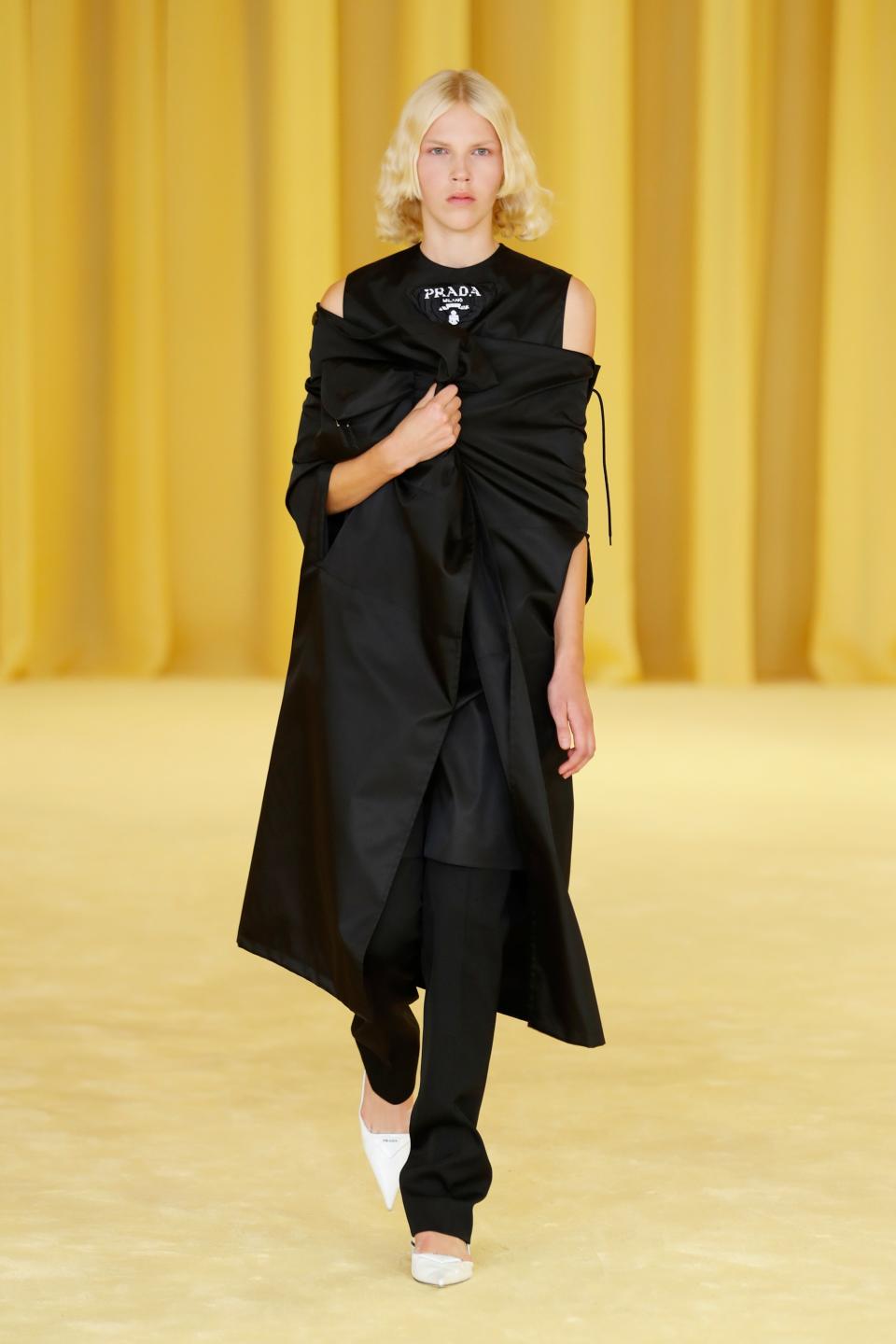
But Prada collections are meant to be turned over in your head. At the risk of sounding like a fashion dodo, Mrs. Prada simply loves to think. In conversations and interviews, she often tries out ideas, seemingly working things out as she speaks. When she disagrees with you, she digs in, asking more questions—“Do you really think so? Why?” Her collections work the same way. “Throwing down the gauntlet on the status quo,” as her late friend Ingrid Sischy once said—but working out her ideas and obsessions and hangups, her observations and proposals. It seems her vision of luxury, of glamour, is a thought-out dinner table peopled with curious geniuses. With style, but not too much. (“Of course I understand the idea of having fun for one evening,” she told Tim Blanks this past summer. “I did it myself at home. My husband and son were in Tuscany, I was in Milan, there was a birthday and we put chandeliers on the table.” I love that!) She makes autobiographical collections, it’s often said, but they’re really invitations to dialogue. They’re shows that reward the viewer or wearer for thinking, considering—that’s why the fashion intelligentsia, and the world of high culture, eat it up. We don’t have conversations anymore, you know. We share statements, we make statements, we reply to each other’s statements. In a world of collabs, collaboration, or a true exchange of ideas and values, is a rarity.
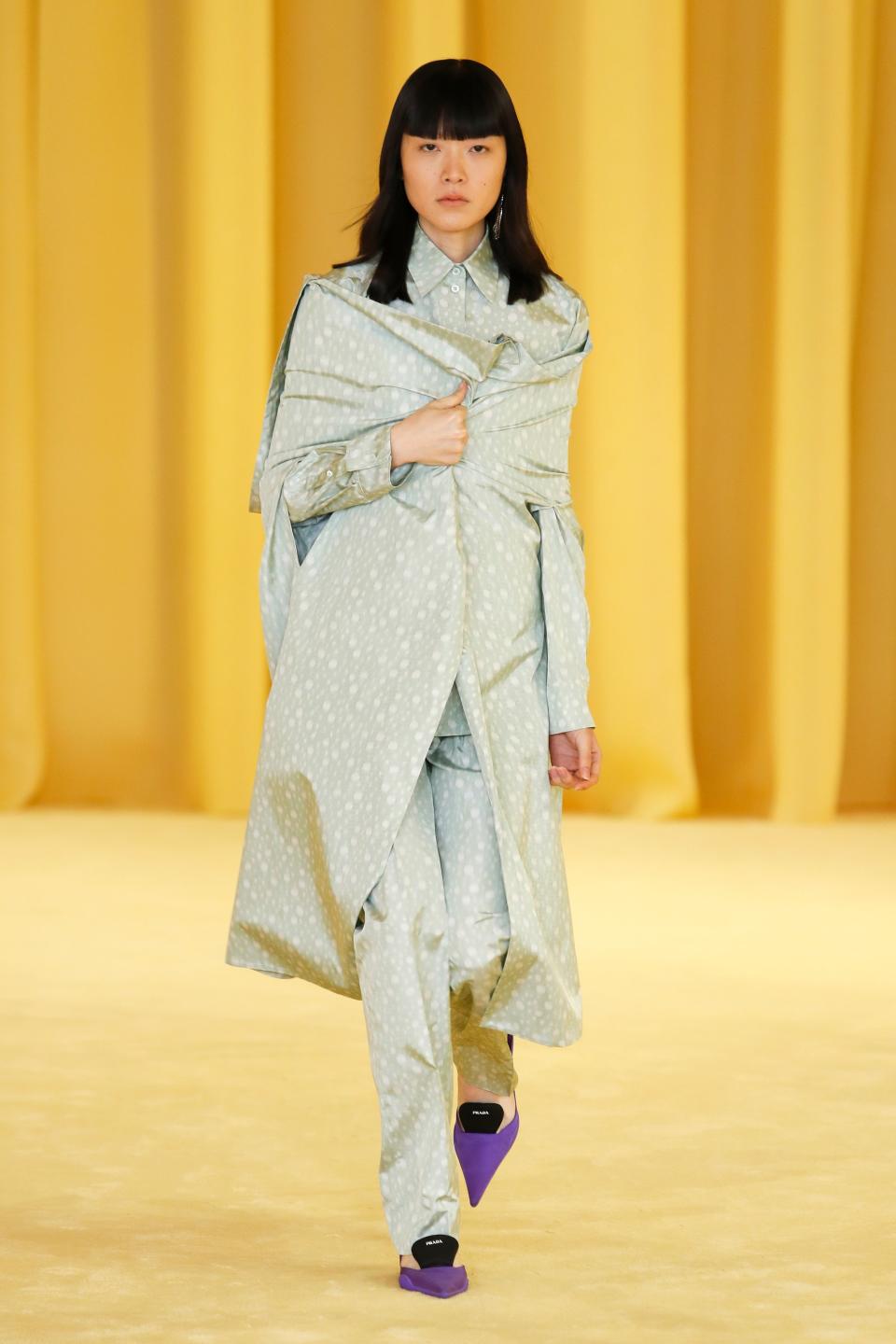
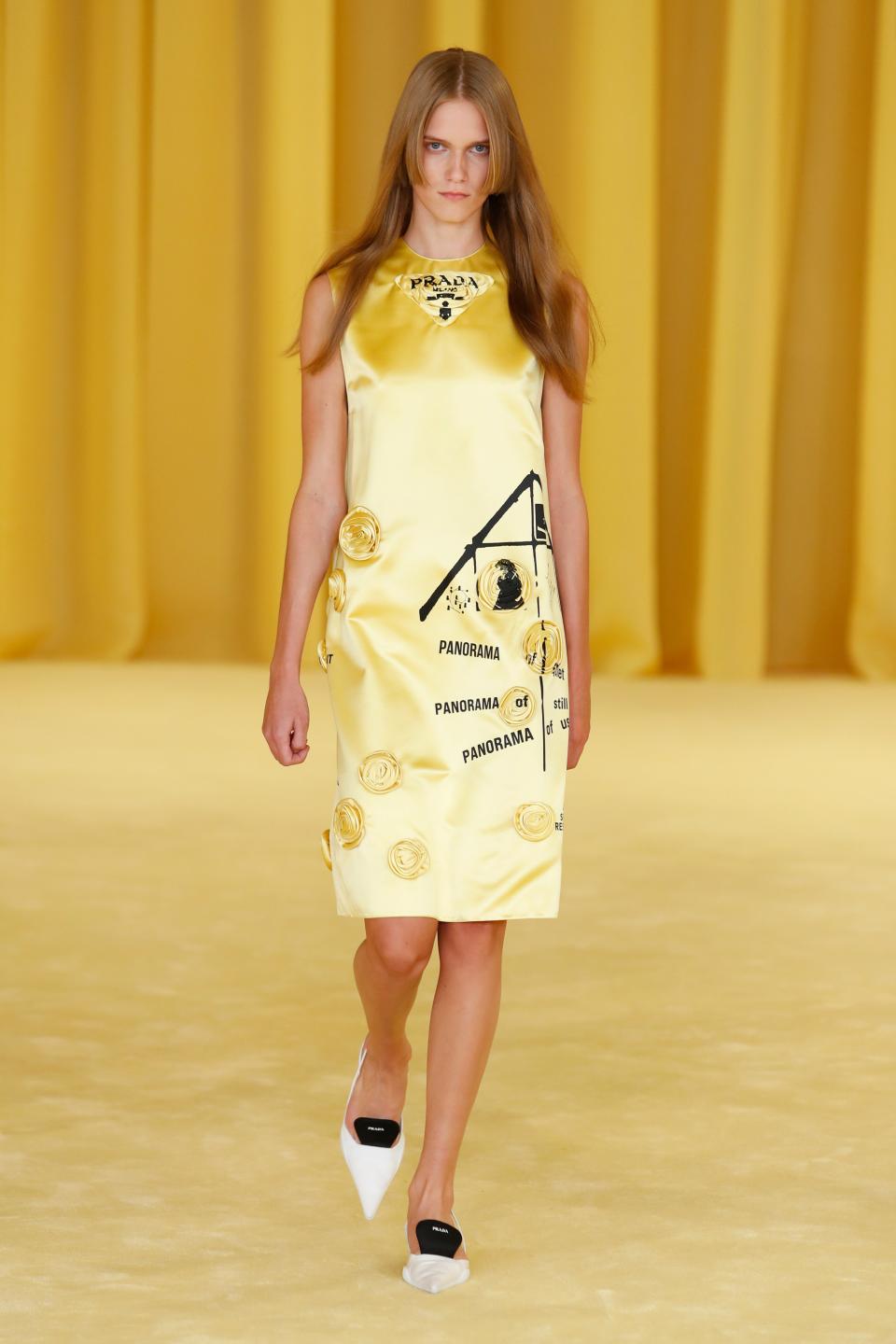
In that regard, this was the most biographical collection to date—a Prada collection about Prada. Mrs. Prada, to be exact. The show notes said this was a show proposing “a uniform of Prada, of a community, a visual representation of identity, of shared and embraced values, a way of thinking.” Steff Yotka, Vogue’s fashion news editor, told me afterwards she thought of it as “Prada fanfic.” If it was industrial, as Simons’s work usually is, it was an industrial approach to the world of Mrs. P, an encapsulation of her world in highly functional clothes—each garment a machine for glamour.
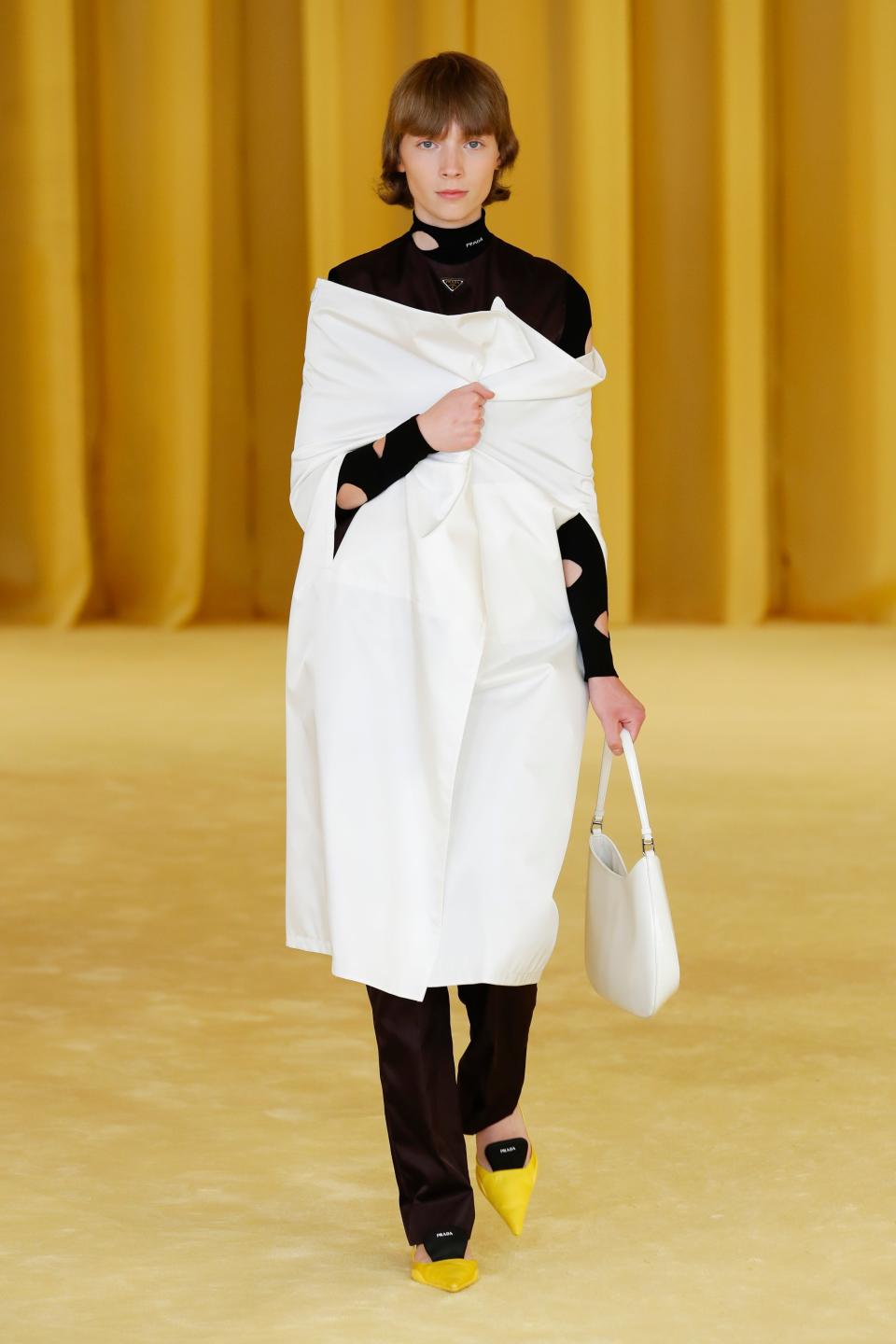
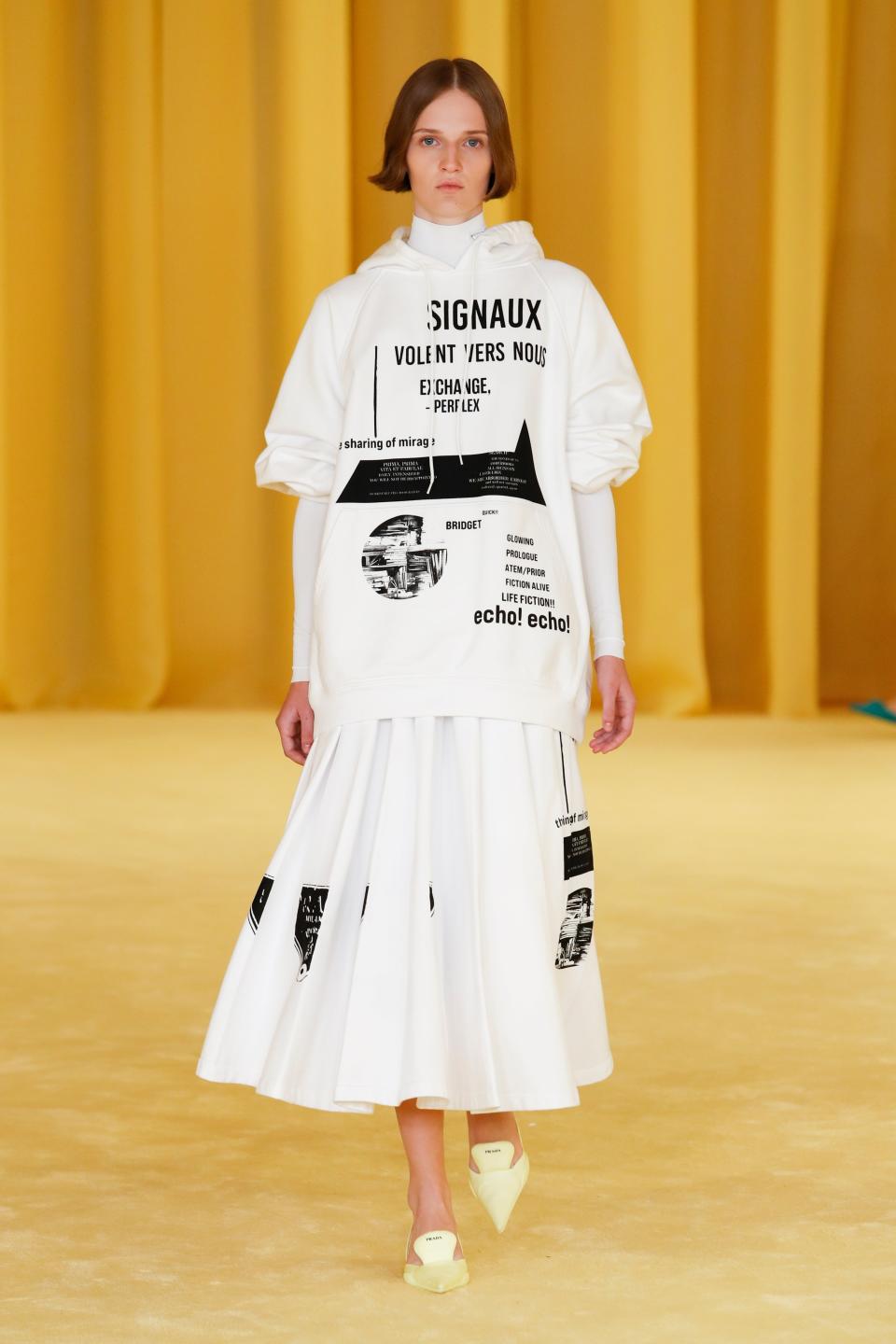
It was the distillation of Mrs. Prada’s persona into iconography: the way Mrs. Prada wears a coat with a slip underneath, clutching the lapels; or an opulent silk green opera coat with clashing kitten heels; or formal pajama sets that epitomize that strange louche chilliness of Milan. The way she wears long, almost baggy sweaters over knife-pleat skirts. It was the canonization of Mrs. Prada into a celebrity, really, with a uniform and style signatures, like her glorious wardrobe of coats. (Though Prada is one of the foremost handbag designers in the world, the brand knows that it’s the coat that really shows a rich woman’s mettle.)
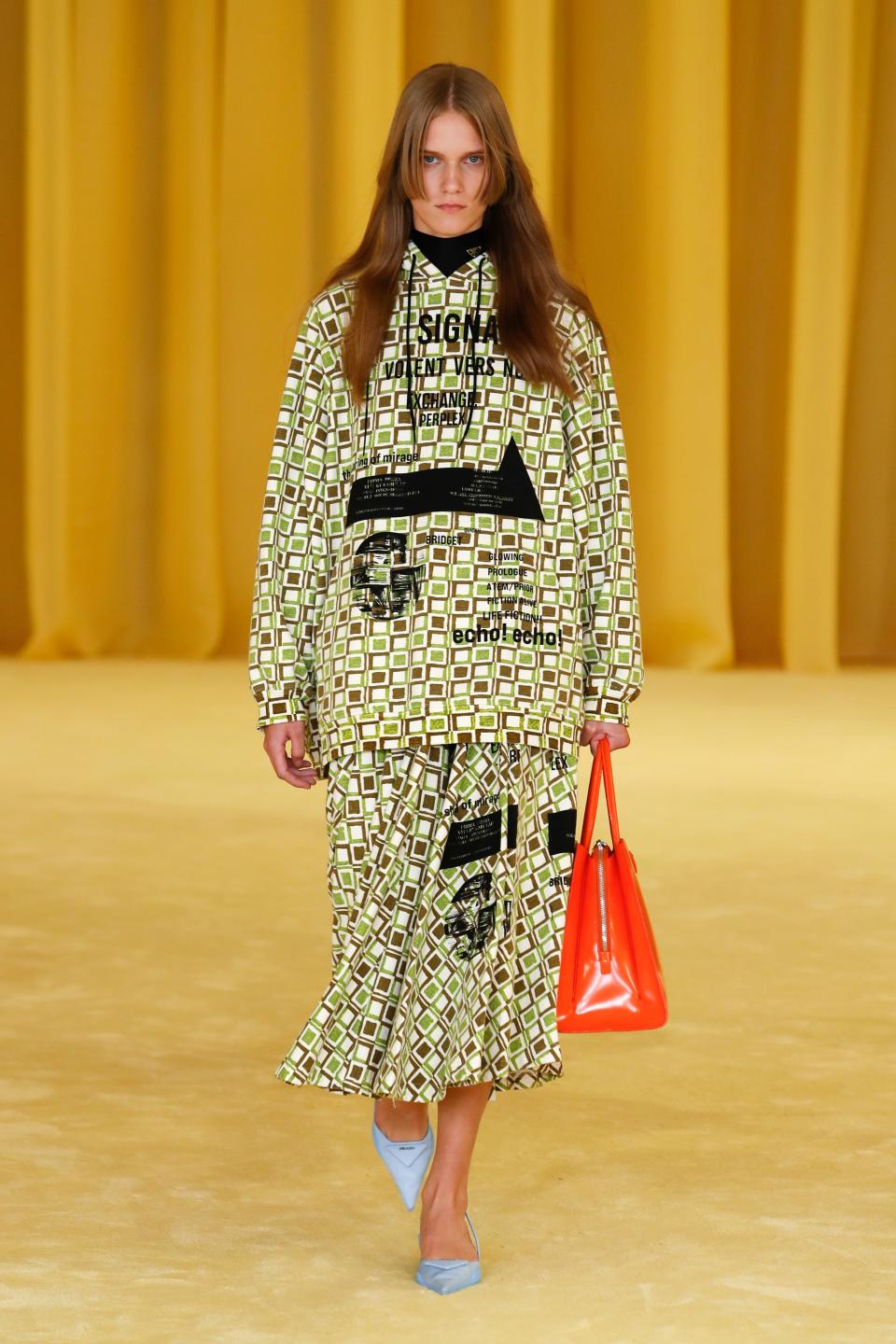

Very few designers become real celebrities—Karl Lagerfeld, for example, is one of the rare fashion personalities to transcend the business. Mrs. Prada isn’t a celebrity, but she is a cult figure, especially to a young audience of fashion fanatics. (It’s surprising, in a way, because her clothes really look better the older you are.) That little coat clutching gesture became a fashion meme this summer, after her fantastic spring 2021 men’s show, and an Instagram account has created an encyclopedia of her outfits over the past few years. Celebrities like Frank Ocean and Rocky have carried forward the brand’s reputation for cerebral luxury—the thinking man’s treat. Much as Marc Jacobs’s astounding fit pics have helped propel his runway looks back to the height of fashion, Mrs. Prada’s own persona has helped—will help—do the same at Prada. As she said in the post-show chat, when asked whether it was possible to do anything new in fashion, “I think that probably is not so relevant anymore.” Ah ha.
Still, a number of details signaled that Simons and Prada are keen to work with a particular kind of blank slate—a pared-back, almost gesture-like quality suggesting clothes reduced to their most essential outlines. I think the time for “effortless” glamour, and accessible clothing (perfectly encapsulated by Phoebe Philo’s Celine), is over. I think the moment for women’s clothing to be strangely glamorous, challenging, bizarre, and even ugly is here again. This wasn’t ugly, yet. It was quite lovely. But it wasn’t a new look, either. It was a new foundation.
Originally Appeared on GQ

